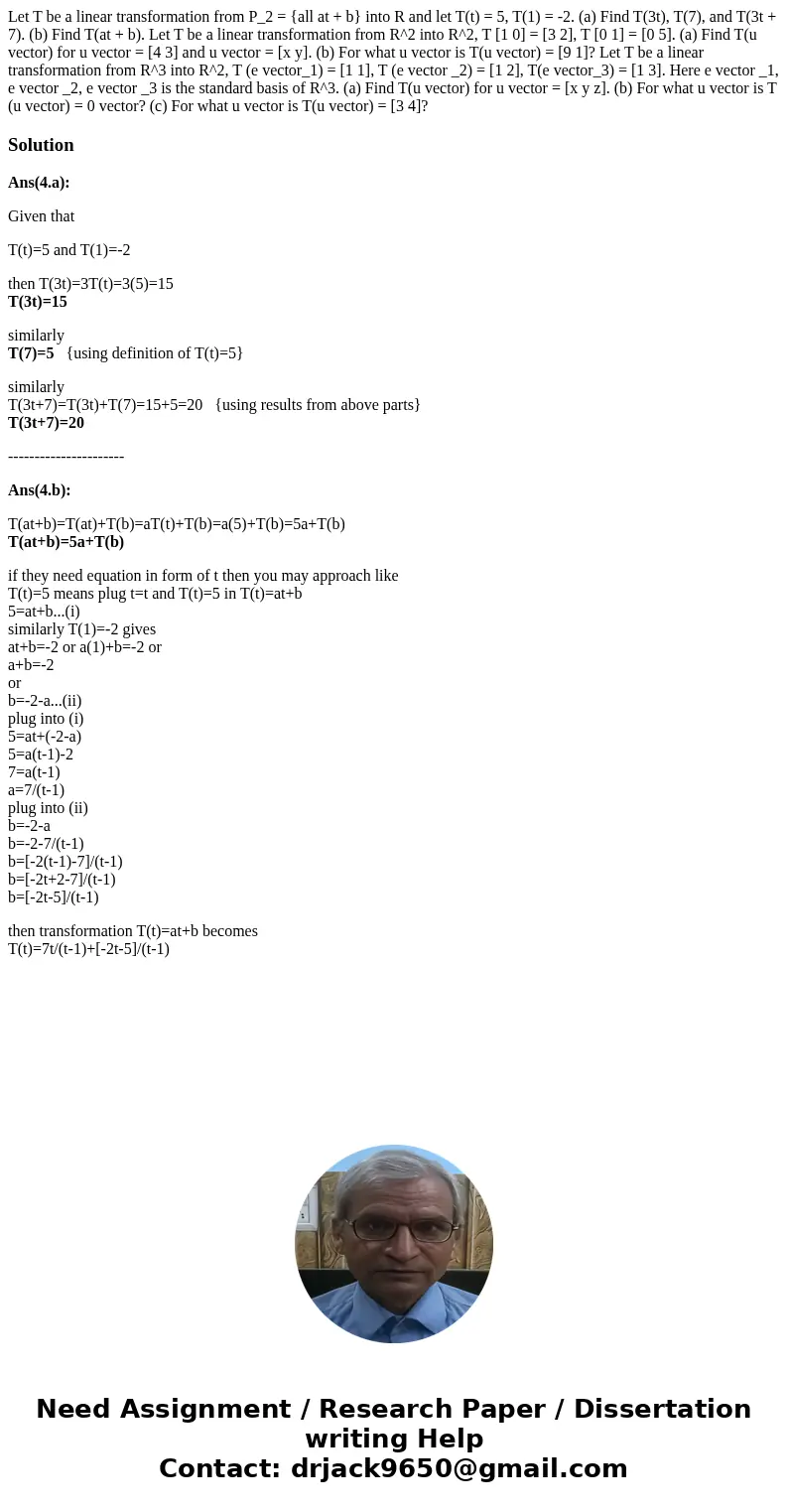Let T be a linear transformation from P2 all at b into R a
Let T be a linear transformation from P_2 = {all at + b} into R and let T(t) = 5, T(1) = -2. (a) Find T(3t), T(7), and T(3t + 7). (b) Find T(at + b). Let T be a linear transformation from R^2 into R^2, T [1 0] = [3 2], T [0 1] = [0 5]. (a) Find T(u vector) for u vector = [4 3] and u vector = [x y]. (b) For what u vector is T(u vector) = [9 1]? Let T be a linear transformation from R^3 into R^2, T (e vector_1) = [1 1], T (e vector _2) = [1 2], T(e vector_3) = [1 3]. Here e vector _1, e vector _2, e vector _3 is the standard basis of R^3. (a) Find T(u vector) for u vector = [x y z]. (b) For what u vector is T (u vector) = 0 vector? (c) For what u vector is T(u vector) = [3 4]?
Solution
Ans(4.a):
Given that
T(t)=5 and T(1)=-2
then T(3t)=3T(t)=3(5)=15
T(3t)=15
similarly
T(7)=5 {using definition of T(t)=5}
similarly
T(3t+7)=T(3t)+T(7)=15+5=20 {using results from above parts}
T(3t+7)=20
----------------------
Ans(4.b):
T(at+b)=T(at)+T(b)=aT(t)+T(b)=a(5)+T(b)=5a+T(b)
T(at+b)=5a+T(b)
if they need equation in form of t then you may approach like
T(t)=5 means plug t=t and T(t)=5 in T(t)=at+b
5=at+b...(i)
similarly T(1)=-2 gives
at+b=-2 or a(1)+b=-2 or
a+b=-2
or
b=-2-a...(ii)
plug into (i)
5=at+(-2-a)
5=a(t-1)-2
7=a(t-1)
a=7/(t-1)
plug into (ii)
b=-2-a
b=-2-7/(t-1)
b=[-2(t-1)-7]/(t-1)
b=[-2t+2-7]/(t-1)
b=[-2t-5]/(t-1)
then transformation T(t)=at+b becomes
T(t)=7t/(t-1)+[-2t-5]/(t-1)

 Homework Sourse
Homework Sourse